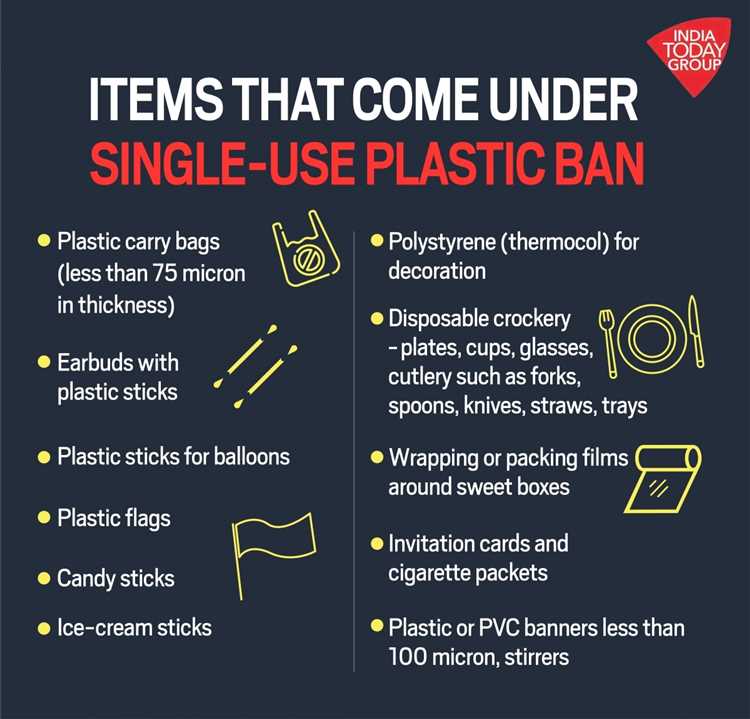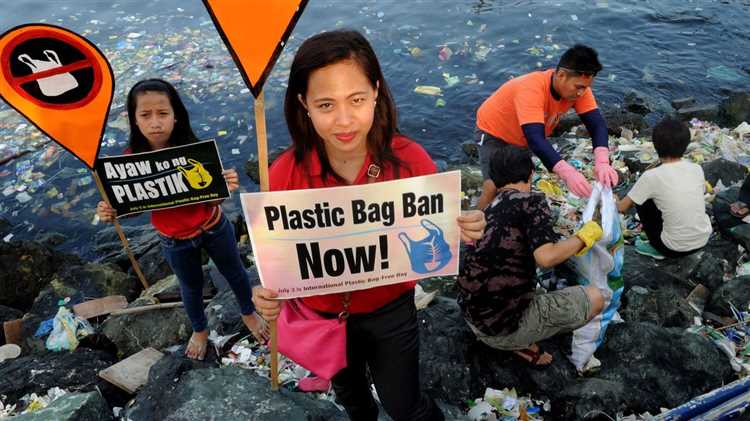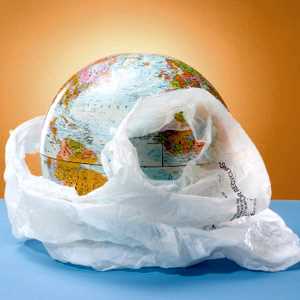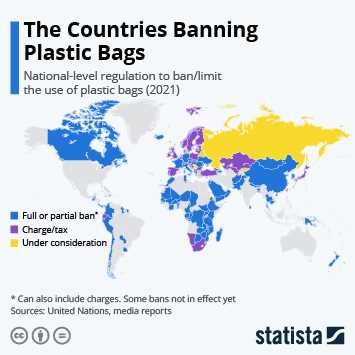
The issue of plastic waste has become a pressing concern for both environmentalists and economists alike. In recent years, the detrimental impact of plastic on our ecosystems and overall well-being has become increasingly apparent. As a result, many countries and regions are considering implementing a total plastic ban as a potential solution. However, such a ban would undoubtedly have significant implications for both the environment and the economy.
From an environmental perspective, a total plastic ban would undoubtedly have numerous positive effects. Plastic waste, particularly single-use items like bags and straws, is a major contributor to pollution in our oceans and landfills. These items can take hundreds, if not thousands, of years to decompose, posing a serious threat to wildlife and ecosystems. By banning the production and use of plastic, we could significantly reduce the amount of plastic waste generated, leading to cleaner oceans, healthier environments, and a better future for our planet.
However, implementing a total plastic ban would not come without challenges, particularly in terms of its economic impact. The production and use of plastic is deeply ingrained in our current consumer culture, and many industries rely heavily on plastic packaging and products. A ban on plastic would require significant restructuring of manufacturing processes and supply chains, which could lead to job losses and financial strain for businesses.
Nevertheless, it is important to consider the long-term economic benefits that could be achieved through a plastic ban. Investing in alternative materials and technologies could stimulate innovation and create new industries and job opportunities. Additionally, the cost of plastic waste management is a significant burden for governments and local authorities. By reducing plastic waste through a ban, these costs could be greatly reduced, freeing up resources that could be used for other important societal needs.
In conclusion, a total plastic ban would undoubtedly have significant implications for both the environment and the economy. While it would undoubtedly help to alleviate the plastic pollution crisis and protect our natural resources, it would also require careful planning and consideration to mitigate the potential economic challenges. Ultimately, finding a balance between environmental sustainability and economic viability should be the ultimate goal as we strive to create a better future for ourselves and the planet.
- Environmental Impact of Banning Plastic
- Consequences for Marine Life
- 1. Plastic Pollution
- 2. Microplastics
- Effect on Land Pollution
- Disruption of the Food Chain
- Economic Ramifications
- 1. Job losses
- 2. Cost implications
- 3. Market adjustments
- Alternatives to Plastic
- 1. Biodegradable Materials
- 2. Paper and Cardboard
- Role of Government in Implementing the Ban
- Q&A
- What are some of the environmental benefits of a total plastic ban?
- How would a total plastic ban affect the economy?
- Are there any countries that have already implemented a total plastic ban?
- What challenges would be faced in implementing a total plastic ban?
- What are some alternatives to plastic that could be used in a plastic ban?
Environmental Impact of Banning Plastic

Banning plastic has both immediate and long-term environmental impacts. One of the most significant benefits of a total plastic ban is the reduction in plastic waste. Plastic takes hundreds of years to decompose and often ends up in landfills or oceans, where it poses a significant threat to wildlife and ecosystems.
By eliminating plastic, we can reduce the pollution caused by plastic waste and protect our natural resources. Plastic production also contributes to greenhouse gas emissions, so a total ban would help in mitigating climate change and reducing our carbon footprint.
Furthermore, a plastic ban can lead to foster innovation and the development of alternative materials that are more environmentally friendly. This shift towards more sustainable packaging options can encourage businesses and consumers to adopt eco-friendly practices and choose products that have a lower impact on the environment.
However, it is essential to carefully consider the unintended consequences of a total plastic ban. In some cases, alternatives to plastic, such as paper or glass, may require more energy and resources to produce. Therefore, a comprehensive analysis of the life cycle of alternative materials is necessary to ensure that their overall environmental impact is lower than that of plastic.
In conclusion, a total ban on plastic can have significant positive effects on the environment. It can reduce plastic waste and pollution, mitigate climate change, and promote the development of sustainable alternatives. However, careful consideration and analysis are necessary to ensure that the chosen alternatives are truly more environmentally friendly.
Consequences for Marine Life
The total plastic ban has significant implications for marine life which heavily relies on the oceans as their habitat. The accumulation of plastic waste in marine ecosystems poses a severe threat to the survival of various species and the overall health of marine ecosystems.
1. Plastic Pollution
Plastic pollution in the oceans has become a major concern due to its detrimental effects on marine life. Marine animals often mistake plastic debris for food and ingest it, leading to severe consequences. Plastic debris can cause internal injuries, block the digestive tract, and prevent the absorption of essential nutrients, ultimately leading to starvation and death.
Additionally, plastic waste can entangle marine animals such as turtles, dolphins, and seals, leading to injuries, drowning, and impaired mobility. The entanglement in plastic debris can hinder the natural behavior and reproductive cycles of these species, affecting their ability to reproduce and maintain stable populations.
2. Microplastics
The ban on plastic can also help address the issue of microplastics, which are small plastic particles less than 5mm in size. These microplastics are often ingested by marine organisms at the bottom of the food chain, such as plankton, fish, and shellfish, resulting in bioaccumulation throughout the food web.
The ingestion of microplastics by marine organisms can lead to a range of negative effects, including reduced reproductive success, altered behavior, and impaired growth and survival. Additionally, the presence of microplastics in seafood consumed by humans poses potential risks to human health.
The total plastic ban can contribute to reducing the sources of microplastics in the oceans, helping to safeguard marine ecosystems and the health of the animals that inhabit them.
| Issue | Impact |
|---|---|
| Plastic pollution | Ingestion, entanglement, and death of marine animals |
| Microplastics | Reduced reproductive success, altered behavior, and risks to human health |
Effect on Land Pollution
One of the major implications of a total plastic ban is its impact on land pollution. Plastic waste is a significant contributor to land pollution, as it takes hundreds of years to decompose naturally, if it ever does.
With a total plastic ban in place, there would be a significant reduction in the amount of plastic waste generated in the first place. This would help prevent the accumulation of plastic litter in landfills, which often end up in the environment due to improper disposal or lack of proper waste management systems.
Additionally, a plastic ban would also discourage the use of single-use plastic products, such as plastic bags and food containers, which are commonly thrown away after a single use and contribute to land pollution. Instead, alternative materials such as paper, glass, or metal could be used, which are more easily biodegradable or recyclable.
Furthermore, a total plastic ban could lead to an increase in recycling efforts, as there would be a higher demand for recyclable materials. This would help reduce the amount of plastic waste that ends up in landfills, as recycled plastic can be used to produce new products instead of being discarded.
| Pros | Cons |
|---|---|
| Reduces accumulation of plastic waste in landfills. | Potential increase in demand for alternative materials, which may have their own environmental implications. |
| Encourages recycling efforts and reduces the amount of plastic waste that ends up in landfills. | May lead to job losses in the plastics industry. |
| Promotes the use of biodegradable and recyclable materials. | Requires significant changes in consumer behavior and infrastructure to support alternative materials. |
In conclusion, a total plastic ban would have a positive effect on land pollution by reducing the accumulation of plastic waste in landfills and encouraging recycling efforts. However, it may also have some negative implications, such as potential job losses in the plastics industry and the need for significant changes in consumer behavior and infrastructure. Overall, the long-term benefits of reducing plastic pollution outweigh the challenges that may arise from implementing a total plastic ban.
Disruption of the Food Chain

The total ban on plastic can have significant implications for the food chain and environmental ecosystems. Plastic waste often finds its way into bodies of water, where it can be mistaken for food by marine animals such as fish, turtles, and birds.
These animals may ingest plastic, which can cause blockages in their digestive systems, leading to malnutrition, organ damage, and even death. Additionally, the toxic chemicals present in plastic can contaminate the tissues and organs of these animals, potentially making their way up the food chain.
As predators and scavengers feed on contaminated animals, the toxic chemicals can accumulate and become more concentrated in their bodies. This process is known as biomagnification. Humans, as the top of the food chain, are at risk of consuming these toxins when they eat seafood or other animals contaminated with plastic-derived chemicals.
Furthermore, plastic pollution can disrupt the habitats and ecosystems that support a variety of species. For example, the presence of plastic can harm coral reefs, which are home to countless marine organisms. The destruction of coral reefs can have far-reaching consequences for the entire food chain, as many species rely on these habitats for food and shelter.
Therefore, a total plastic ban is essential to protect the delicate balance of the food chain and prevent further damage to the environment and its inhabitants. It is crucial to find sustainable alternatives to plastic and promote responsible waste management practices to ensure the long-term health of our ecosystems.
Economic Ramifications
The implementation of a total plastic ban would have significant economic implications for both businesses and consumers. While the ban would aim to reduce plastic pollution and its negative impact on the environment, it would also result in several challenges for industries and the economy as a whole.
1. Job losses
A plastic ban would directly affect industries that manufacture plastic products, leading to job losses in these sectors. The plastic industry employs a large number of people worldwide, and a sudden ban could have severe consequences for workers and their families. Additionally, ancillary industries that support plastic manufacturing, such as raw material suppliers and packaging companies, would also be negatively impacted.
2. Cost implications
The cost of alternative materials to replace plastic would likely be higher, at least initially. Businesses would need to invest in research and development to find and implement sustainable alternatives. This additional expense would be passed on to consumers through higher prices for products and services. Consequently, consumers may need to pay more for everyday items such as groceries, household products, and packaged goods.
Moreover, the production of alternative materials, such as biodegradable or reusable options, requires significant resources, including energy and water. This could put further strain on already limited resources, potentially leading to increased costs and economic challenges.
Furthermore, the ban could also lead to a decrease in overall consumption and demand. Consumers may choose to reduce their purchases or opt for second-hand items to avoid the higher cost of alternatives. This could have a domino effect on businesses, leading to reduced profits, lower investment, and potentially stunting economic growth.
3. Market adjustments
A total plastic ban would require industries to make significant adjustments to their manufacturing processes and supply chains. Businesses would need to find alternative materials and modify their production lines to accommodate these changes. Additionally, suppliers and retailers may need to find new ways to package and transport goods to meet the ban’s requirements.
This transition would require time and resources, potentially causing disruption in the market. Smaller businesses, in particular, may struggle to keep up with the necessary changes, potentially leading to market consolidation and a loss of diversity. The overall impact on the economy would depend on the ability of businesses to adapt and adjust to the ban’s requirements.
In conclusion, while a total plastic ban may have positive environmental ramifications, it would also have significant economic implications. The loss of jobs, increased costs, and market adjustments would pose challenges for industries and the economy as a whole. Any transition towards a plastic-free future would need to carefully consider these economic factors to ensure a smooth and sustainable transition.
Alternatives to Plastic

As the world considers the implications of a total plastic ban, it becomes crucial to explore alternatives that are more environmentally friendly. Here are some potential options:
1. Biodegradable Materials

Biodegradable materials, such as plant-based plastics or bioplastics, are designed to break down and decompose naturally in the environment. These materials are often made from renewable resources, like cornstarch or sugarcane. While they may still require specific conditions to biodegrade, they present a better alternative to traditional plastic, which can take centuries to break down.
2. Paper and Cardboard
Paper and cardboard are widely available, renewable resources that can serve as alternatives to plastic packaging. These materials can be recycled or composted, reducing waste and carbon footprint. Additionally, paper and cardboard packaging can be easily customized and designed, allowing for creative and eye-catching packaging solutions.
3. Glass and Metal
While glass and metal may not be suitable for all applications, they can be used as alternatives to plastic in certain cases. Glass and metal containers are durable and can be reused multiple times, reducing the need for single-use plastic. Additionally, they are recyclable, helping to minimize waste and environmental impact.
4. Natural Fibers
Natural fibers, such as cotton, hemp, or bamboo, can be used to create eco-friendly alternatives to plastic products. These fibers are biodegradable and can be molded or woven into various products, including bags, utensils, or even packaging. By opting for natural fibers, we can reduce our reliance on synthetic materials and their harmful environmental effects.
In conclusion, as we strive to reduce our dependence on plastic, exploring these alternatives can pave the way for a more sustainable future. While each option has its limitations, adopting a combination of these alternatives can significantly reduce plastic waste and its detrimental effects on the environment.
Role of Government in Implementing the Ban
The implementation of a total plastic ban requires strong leadership and regulation from the government. It is essential for the government to play a pivotal role in driving the change, as they have the power and authority to enforce policies and monitor compliance.
The government’s first step should be to pass legislation and policies that outline the ban and its specific requirements. This includes defining which types of plastics are prohibited, setting timelines for compliance, and establishing penalties for non-compliance.
Additionally, the government should provide financial and logistical support to businesses and individuals in transitioning away from plastic. This support could take the form of grants, subsidies, or tax incentives for businesses that invest in alternative packaging solutions or recycling infrastructure.
In order to effectively enforce the ban, the government should also invest in robust monitoring and inspection systems. This could involve training and equipping enforcement officers to carry out regular inspections of businesses, retailers, and manufacturers to ensure they are adhering to the ban. Penalties for non-compliance should be steep enough to deter violations and should be consistently and fairly enforced.
| Government’s Responsibilities | Actions |
|---|---|
| Policy and Legislation | Pass laws and policies outlining the ban and its requirements |
| Support | Provide financial and logistical support to businesses and individuals |
| Enforcement | Invest in monitoring and inspection systems |
| Penalties | Establish penalties for non-compliance and enforce them consistently |
The government should also play a role in raising public awareness and promoting education about the environmental impact of plastics and the benefits of the ban. This can be done through public campaigns, educational programs in schools, and partnerships with community organizations.
In conclusion, the government has a crucial role to play in implementing a total plastic ban. Through the passage of legislation, provision of support, enforcement of regulations, and promotion of public awareness, the government can effectively drive the transition to a plastic-free society.
Q&A
What are some of the environmental benefits of a total plastic ban?
A total plastic ban would have several environmental benefits. For one, it would reduce the amount of plastic waste that ends up in landfills and oceans, which can harm wildlife and marine ecosystems. It would also decrease the pollution caused by the production and disposal of plastic, including the release of greenhouse gases. Additionally, a plastic ban would encourage the use of alternative materials that are more sustainable and biodegradable.
How would a total plastic ban affect the economy?
A total plastic ban would have both positive and negative impacts on the economy. On one hand, it would create opportunities for new businesses and industries to develop alternative materials and products. This could lead to job creation and economic growth. On the other hand, industries that rely heavily on plastic, such as the packaging and manufacturing sectors, could suffer. The cost of transitioning to alternative materials may also be a burden for some businesses.
Are there any countries that have already implemented a total plastic ban?
Yes, there are several countries that have already implemented a total plastic ban or have taken significant steps towards reducing plastic use. For example, Kenya has banned the production, sale, and use of plastic bags. In 2018, India announced a plan to ban all single-use plastics by 2022. Other countries, such as France, Canada, and the United Kingdom, have implemented various restrictions and regulations on plastic use.
What challenges would be faced in implementing a total plastic ban?
Implementing a total plastic ban would come with its fair share of challenges. One challenge would be finding suitable alternatives to plastic that have a similar level of functionality and affordability. Another challenge would be changing consumer behavior and mindset, as many people have become accustomed to the convenience and ubiquity of plastic products. Additionally, the enforcement of a ban and the regulation of the production and distribution of plastic alternatives would require significant resources and coordination.
What are some alternatives to plastic that could be used in a plastic ban?
There are several alternatives to plastic that could be used in a plastic ban. Some examples include paper, cardboard, glass, metal, and biodegradable materials such as plant-based plastics and compostable polymers. These materials can be used for packaging, utensils, bags, and various other applications. However, it’s important to consider the environmental impact and life cycle of these alternatives to ensure they are truly sustainable and not just shifting the problem to another material.